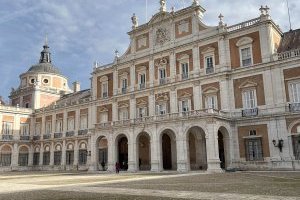
Some World Heritage Sites loom large and will stun and wow people no matter who you are or where you are travelling from. I think of my time at Victoria Falls or Jerusalem and how immediately accosting those were. Aranjuez is not a site such as those, and that's okay, it's in the "majority" of sites. Aranjuez, like many of the historical cultural sites, will vary in what it offers to the visitor based on how much you effort you put into learning about it.
So what is Aranjuez?
Aranjuez was the "summer palace" location that the Spanish monarchs would retire to in the 1700s and 1800s. It has a quite massive aforementioned palace that was expanded over time, as well as a large garden/park that still exudes immense beauty, especially during the warmer months. There is a waterway that was artificially built by the monarchs so they could have boating events near the palace, and the original city center (which is removed a little bit from the palace) was originally designed to only allow members of the royal court to reside there. As a result, Aranjuez becomes a bit unique following such an "exclusive" royal history.
What type of background you come from may color how you experience Aranjuez.
Perhaps you've never been to Spain (or maybe even Europe!) before and this is one of the first handful of sites you are seeing. In that case, you're going to love Aranjuez. The size of the …
Keep reading 0 comments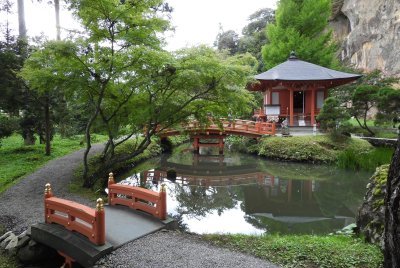
Visit date(s): October 5 & 6, 2024
Nearby sites on trip: Hiraizumi
Overnight location: Onsen near Ichinoseki
Location(s):
- Takkoku-no-Iwaya (photo)
- Cultural Heritage Center (There are other sites listed, but the staff at the cultural centre suggested that they weren’t worth the trips because they were archaeological sites without access for visitors. Some artefacts from them were in the centre. There were photos of some others that are in the Tokyo national museum.)
Travel method(s): car
Travel duration: 15 minutes
Visit duration: About 1 hour
OUV: I haven’t found a stated reason why this site was not included in the original submission. There are however some obvious differences. The gardens surrounding Mount Kinkeisan are each within 2 km of it. This one is about 7 km away and, because it is a mixed Buddhist-Shinto site, has a very distinct look. The garden here is much smaller than the others, but the whole site is smaller too. It had started as a Shinto site, but Buddhist elements were added contemporary to the development of the closer gardens. The same Fujiwara family endowed buildings here as well as building the gardens in town.
Best of: The water feature, bridges and buildings complement each other, as can be seen in the photo.
Keep reading 0 comments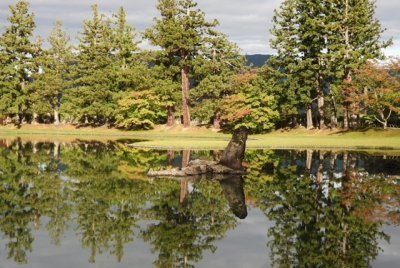
Visit date(s): October 5 & 6, 2024
Nearby sites on trip: Hiraizumi (extension)
Overnight location: Onsen near Ichinoseki
Location(s):
- Môtsû-ji
- Kanjizaiô-in Ato (photo)
- Chûson-ji
- Mount Kinkeisan
- Hiraizumi Cultural Heritage Center, on Mount Kinkeisan (There is one other site listed, but the staff at the cultural centre suggested that it wasn’t worth the trip because there wasn’t really access for visitors. Some artefacts were in the centre. There were photos of some others that are in the Tokyo national museum.)
Travel method(s): car and foot
Travel duration: Less than 15 minutes
Visit duration: 1 day total
OUV: This is difficult to fully evaluate without belonging to or studying the culture of Japanese Buddhism and Shintoism. The reconstructed gardens were certainly lovely, tranquil and meditative places. The preservation of the 12th century Konjikidô is amazing where so many wooden structures have been lost to fire.
Best of: The heavily gilded temple Konjikidô of Chûson-ji was absolutely stunning. Inside the concrete sheath, every detail has been preserved. A recording gives information about the features alternating in English and Japanese, so we could study it, then pay attention briefly before viewing some more. The gardens, though less showy, were very relaxing.
Worst of: We have no pictures of Konjikidô. Photos are not permitted. Shuffling past it was the only crowded part of the visit.
Keep reading 0 comments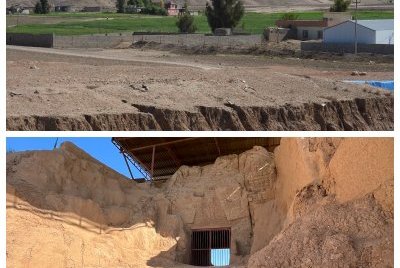
Nineveh is yet another classic name on the list of Iraqi TWHS. Although it was present as a trade colony at the time of Ancient Mesopotamian civilizations early on, Nineveh’s heydays came with the Neo-Assyrians in the 9th century BC and spanned a relatively short period. It was their last capital and the end of the Assyrian Empire. In its time, it even was the largest city in the world. This Historical Travel Guide explains what you might have seen there when you were lucky to visit it in the 7th century BC.
The archaeological site of Nineveh can now be found in Mosul, across the river from the Old City. You will mostly notice the earthen walls surrounding it. The interior lies, as with so many things in Iraq, mostly unexcavated after the Assyrian sculptures were taken from it in the late 19th century and whisked off to museums around the world. The area is protected, but some poor people have set up camp there.
In addition to the walls, the most notable features are the gates. We visited two of them, very similar. You need a lot of imagination to see monumental entrances to a flourishing city in them. The gates also suffered from a lot of damage done by ISIS.
Keep reading 0 comments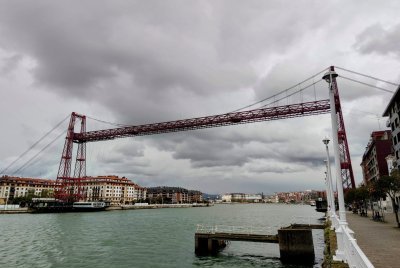
I was expecting to be pretty underwhelmed by this WHS (after all, it is just a bridge...) but it was actually quite a bit better than I expected! I visited this during March 2025, during the year my wife and I have been living in Spain. We had a trip to the nearby San Sebastián planned, and so rented a car specifically for the purpose of doing a day in Bilbao where I knew I we could see this bridge.
Unfortunately for me, our other activities took a bit longer than expected, and parking in Bilbao can be a bit tricky. Be aware of that if you are bringing personal transportation into the city as opposed to public transport. Due to the aforementioned factors, my group of four sadly did not have time to cross the bridge as planned, but I did still get to walk up to the base of the bridge and watch it move across!
I had read a decent number of the reviews on here before visiting, but there was one thing I still didn't quite realize – when people talk about the bridge's gondola, you should not think of a typical pedestrian gondola used to ascend mountains. Rather, the gondola is a huge platform that hangs just over the water, level with the street. That's what makes this a "hanging transporter bridge". The gondola is a big flat platform (with walls, but no ceiling) that you can drive your …
Keep reading 0 comments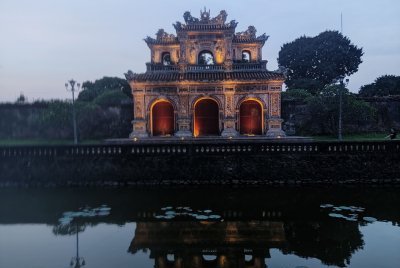
Time of the visit:22nd -26th,april,2025.
On the 22nd I arrived in Hue around 15.00.I just took a long walk around a large part of the inner outer areas of the citadel without entering the citadel as it was quite late.The following day I entered the huge citadel around 11.00 am and stayed there till around 17.30.It was an extremely hot day so that I needed far more time to visit all sections within the big citadel. The heat made me take far more breaks than intended.On a cooler day 3 h would have been sufficient to visit the entire citadel.
On the 24th I rented a bicycle in order to visit some of the tombs outside Hue.That day it was even hotter than the day before.My first destination was the temple of letters where I stayed less than 10 min as there wasnt much to see.I then rode to the Thien-Mu-Pagoda which was quite disappointing and underwhelming but easy to reach by bike.I then crossed the river and visited the Royal Arena and the nearby Voi Re lake.The arena was closed and not really worth a visit.I continued my trip to the tomb of the emperor Tu Duc.To my great dismay there are no combo tickets with several other tombs...only a citadel ticket with three tombs.I had to buy that ticket as a single ticket for every tomb costs 150.000 dongs.Quite pricey.The Tu Duc tomb turned out to be a very interesting one.It is also the most popular …
Keep reading 0 comments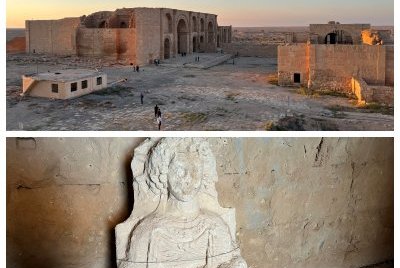
Hatra is one of the stars of the National Museum in Baghdad: it produced those funny statues of men with curly hair and a surprised expression, raising one hand as if to say “Hi!”. The ancient city, built by the Parthians, dates mostly from the 1st and 2nd centuries AD. With its columns and capitals, it clearly was inspired by the “global” architectural trends of Classical Antiquity.
The archaeological site of Hatra lies a bit of a drive from the main highway, in the desert. This area has seen a lot of fighting with ISIS and still Shia militias keep an eye on its “back” as it borders the desert, which eventually leads to Syria. Regular villages in the area have been abandoned. You will still see bullet holes and find wasted bullets on the ground, but the site has been patched up, including reinstating damaged sculptural figures and reliefs. These don’t have the quality of those that you find in museums (they look a bit weathered), but I guess that has always been the case in the site’s modern history and is not a result of the recent conflict.
We arrived about an hour before sunset, a bit late, and we had to skip the introduction by the site manager to make the best of our time on the ground. It would have been worth having it, though, as the site lacks any interpretation. The core of the fortified city consists of what is essentially a multicultural …
Keep reading 0 comments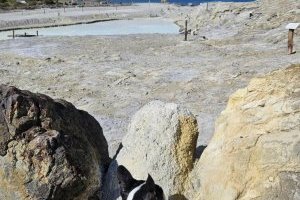
We based ourselves in Milazzo off the Coast of Sicily and the closest port to the Isole Eolie (Aeolian Islands) for Day trips. Our visit to the islands consisted of a long day trip to 2 of the closest islands being Lipari and Vulcano. We utilised Liberty Lines being local ferries around the islands rather than undertaking with a tour company. Ticket prices were reasonable with a lot of flexability for ferry times, and we could take our Boston Terrier dog with us. Lipari was more urbanised with a lot more infrastructure, activities and sites. We particularly enjoyed the old castle area with the Basilica di Dan Bartolomeo and the archaeological ruins in the area. The islands are inscribed due to their volcanic landforms, activity and the continuing study of volcanology through history. They are also home to a number of unique and threatened bird species, reptiles and mammals. Which we found interesting as there were numerous cats on both islands wandering around, which we thought would be a threat to these unique and threated species themselves. That being said, we spent about 4 hours exploring Lipari town before catching another ferry to Vulcano. On volcano, the sulphur "rotten egg" smell immediately hits you and is present for most of your exploration of the Vulcano Porto. The volcano on Vulcano is active and rising above the town you can see the smoke constantly coming from the top, although you don't feel threatened in any way. We explored the mud pools …
Keep reading 0 comments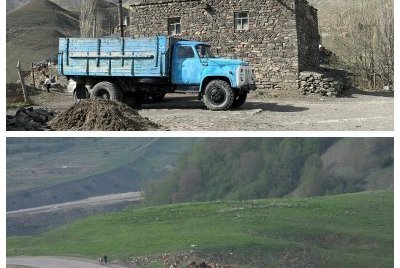
Khinalig isn’t visited much by our community – it is too remote to feature on a first itinerary of Azerbaijan. A direct drive from Baku takes 4 hours; so it should be in our Remote Cultural WHS connection. I got there via a day tour from Baku by Azerbaijan Travel Company (booked via the cheaper GetYourGuide). They run daily group tours with an English-speaking guide, which are surprisingly popular. It included some other short stops as well (Candycane Mountain and the Red Village (the town of the Mountain Jews, where the synagogue now has been closed and is guarded by Azeri soldiers because of Gaza tensions)), but when you go on your own I’d recommend doing Khinalig only as it is by far the most interesting part.
The name of the village and its people isn’t pronounced “Khee-nah-leek” as I had always thought, it is something like “Geh-nuh-leg” (the g as in the guttural Arabic/Dutch g). Despite the town of Khinalig being the obvious focus of the WHS, the core zone is much larger as it also includes both their winter and summer pastures, plus the narrow way between them which is over 200km! I tried to follow on the map whether the access road is part of that zone, but it isn’t: it meanders southeastward through an area with only minor roads. We still saw plenty of sheep and cows being moved around though.
Although there is a paved road nowadays all the way to the village, …
Keep reading 0 comments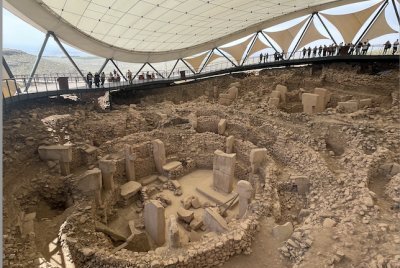
I visited Göbekli Tepe back in March 2025. As mentioned, you can take the bus from the stop outside the archeology museum. The archeology museum itself is a must-see; but you need to budget at least a couple hours for it. It's giant and covers a wide range of history in the region -- including, of course, Göbekli Tepe. Once you finish the museum, you can head outside for the bus, which leaves on the 45 of the hour (sharp, too, so don't get outside at 9:47 or you'll miss it!). The bus only takes contactless credit card or Urfa Kart, so don't bring cash. It's about 1 USD. If you're coming from the airport, the bus also stops on the hour at the Havas shuttle bus stop -- you come from the airport with the havas bus, and then wait here for the Göbekli Tepe bus. Ask the bus driver when they plan to leave to go back to the city after you arrive (google translate will come in handy here).
At Göbekli Tepe, you can easily spend an hour. There's a small museum (again, I would recommend the archeology museum over this one) that gives some context to the site and its importance. The rock carvings are easy to spot and you can circumnavigate them under the big tent. The only thing I wished for was more explanation on what I was seeing at times! I eavesdropped on a couple guided tours to better understand a …
Keep reading 0 comments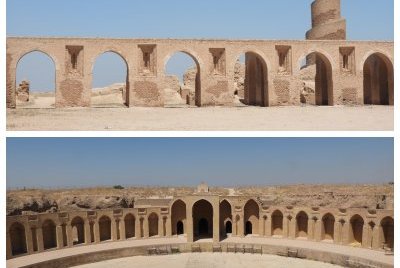
Although best known for its Spiral Minaret, Samarra is much more. It’s the archaeological site of a city that was the short-lived capital of the Abbasids. They built it as a planned city in the countryside, away from the populace of Babylon, to create “a new royal culture revolving around sprawling palatial grounds, public spectacle and a seemingly ceaseless quest for leisurely indulgence". Consider it an early version of one of those new capitals that you also see in Brazil (Brasilia), Indonesia (Nusantara), Myanmar (Naypyidaw). The site is spread across 10 locations in and around the modern city of Samarra, and several of those were visitable in April 2025, although the checkpoint density still is higher here than elsewhere in Iraq.
We started at the Great Mosque. It lies in a particularly ugly patch of the city, almost like an industrial estate. A rope prevented us from coming too close and entering either the mosque or the minaret. The latter, shaped like a Mesopotamian ziggurat, is still picture-perfect. Of the mosque, not much else remains than the outer walls. Both are subject to a restoration project (the official reason given for not being allowed to enter), but no work seemed to be ongoing.
When you go out of the city and cross into the desert, the remains of the Abbasid city walls can still be seen clearly. We drove on for some 15km to the Abu Dalaf mosque. I enjoyed it tremendously from the start: its …
Keep reading 0 comments
I traveled here years ago while teaching English in Tokyo. I had a vacation, had already traveled widely, and this place caught my eye, for its obscurity. Administratively, the islands are part of the city of Tokyo, even though they’re on the same latitude as Okinawa, much further out into the Pacific than any other Japanese islands. Iwo Jima, where the US Marines raised their flag on 23 February 1945, is part of the island group, but civilian visitation is almost completely restricted. Another island was also off limits when I visited, due to a Japanese military base. At the time, traveling by ferry in the cheapest class seemed like an interesting travel experience, and I remember lying around on fake tatami mats, eating snacks and drinking beer. Speaking Japanese helped, as I chatted with folks my own age, and it was fun when the boat rolled in some seas. We all went ‘whoa’ together, tried not to slide, and then chuckled nervously.
When I finally arrived in Chichijima (Dad Island), I was surprised to find many young people from around the world visiting, and they asked me if I was there to watch the international junior surfing championships. Apparently, during the typhoon season—late summer/ early fall—, there’s epic swell that attracts some of the world’s best surfers. I hadn’t planned to watch, but I did wander around a few beaches without seeing much actual surfing. On the other hand, I did spend a lot of time with several …
Keep reading 0 comments
The Château de Fontainebleau offers an exceptional journey through eight centuries of French royal history. Less crowded than Versailles, it provides an intimate and immersive experience into the lives of monarchs from Francis I to Napoleon III. Visitors can admire the splendid Galerie François Ier, the Emperor’s Throne Room, and the private theatre of Napoleon III—each a testimony to evolving styles from Renaissance to Empire.
The surrounding gardens are equally breathtaking. The Grand Parterre, designed by André Le Nôtre, is among Europe’s largest formal gardens. The English Garden offers a peaceful contrast with winding paths, exotic trees, and romantic views, including the Carp Pond and the charming Pavillon de l’Étang.
What truly sets Fontainebleau apart is its ongoing cultural vibrancy. The château hosts concerts, exhibitions, and academic conferences year-round, breathing life into its historic walls. The annual Festival of History and Music of Fontainebleau, as well as artist residencies, continue the site's legacy as a hub of artistic creation since the 16th century.
Easily reached from Paris, Fontainebleau is a must-visit for lovers of history, architecture, gardens, and the arts. It is not just a monument—it is a living heritage site, deeply connected to the cultural fabric of France.
Keep reading 0 commentsAndrew_Kerr
Kyiv: St. Cyril's and St. Andrew's Churches
Kyiv: St. Cyril's and St. Andrew's Churches (On tentative list)
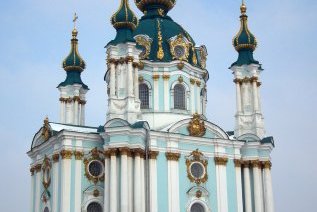
Coming from the UK, where all our great cathedrals and abbeys are built of stone with no colour on the exterior save for the stained glass windows, the cathedrals and churches in Ukraine are opulent by comparison, particularly the baroque churches such as St Andrew's (pictured). Beautifully painted in pastel colours and finished with gold leafing it's a truly sumptuous example of rare Elizabethan Baroque.Within a very short distance there are the equally impressive, St Michael's Monastery and St Sophia's Cathedral (already a UNESCO WHS listing) so I don't quite see why there should be a separate listing, in fact it's a little confusing, just include them in the existing one.I've been lucky enough to visit all the buildings on the list apart from St Cyril's Church and I was impressed by all of them. At the time of writing, Ukraine is still under attack by Russia and I hope that these magnificent sights in Kyiv manage to escape serious damage.The Kyiv-Pechersk Lavra, some way outside the city centre, covers a large area and is made up of multiple churches, bell towers, a cathedral and the monastic caves where the name comes from. If anything the site is even more impressive than the buildings in the city centre and I have no doubt they are all worthy of inclusion.
Keep reading 0 comments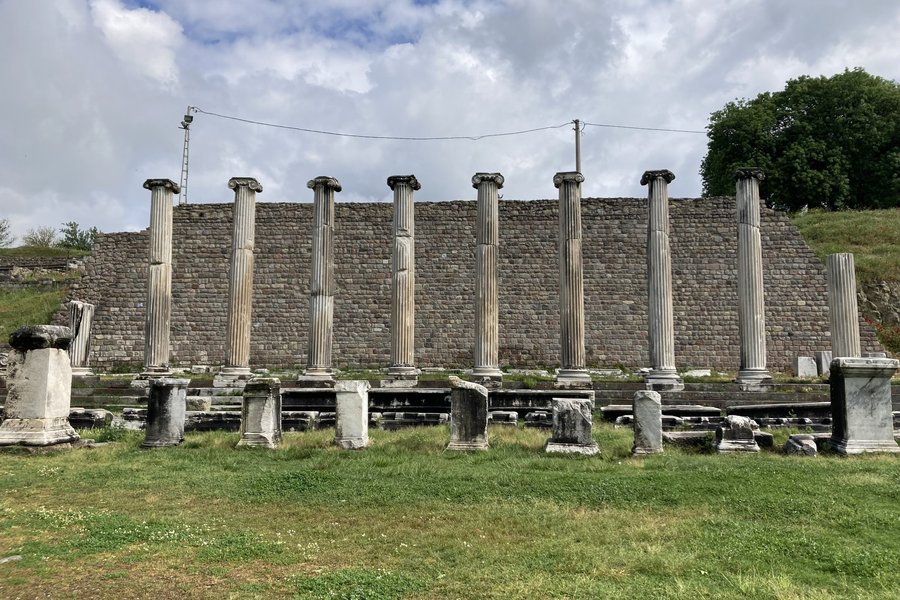
The most surreal experience I've ever had at a museum. The upper part was full of people and clean, but the lower half with the agoras and the Olympeion was totally empty, with cows grazing and pooping everywhere, and nighly illegible signs. The UNESCO sign was also missing because it was broken? How does that even happen lol?
Fun fact: Pergamon is the origin of parchment
Keep reading 0 comments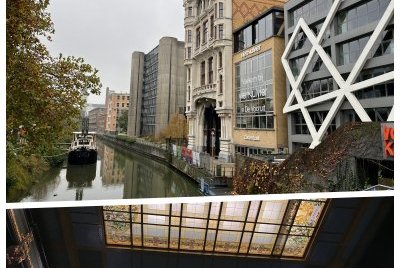
The Workers' Assembly Halls, a nomination led by Denmark, is one of the more prominent upcoming serial transnational initiatives. It is aiming for inscription in 2027. They represent the international democratic labour movement of the years 1850 to 1950. This isn’t a popular subject in the 21st century, but “we” (the workers in the countries where the labour movement had a significant impact) owe perks like the 8-hour workday and holiday bonuses to them.
Among the 7 proposed Assembly Halls in 6 countries is “De Vooruit” in Ghent, Belgium. It has just appeared on the country’s tentative list (April 2025), and is definitely part of the final selected group that is preparing a nomination and it has received funding to do so from the Flanders government. I visited it on November 9, 2024, on a guided tour.
The ‘Vooruit’ (Dutch for “Forward”) dates from 1913, the year Ghent hosted an International Exhibition. It seemed a good idea to the local socialist movement to celebrate its cause via a grand building, which was to be situated along the main road between the railway station and the city centre. The construction was funded by the eponymous socialist cooperative, which managed a bakery, a brewery, pharmacies, and other businesses aimed at the socialist customer. Workers could use its services against fair prices, to protect them from rampant capitalism.
The building has a very fine facade, but unfortunately, it is completely covered in scaffolding at the moment (works to improve its …
Keep reading 0 comments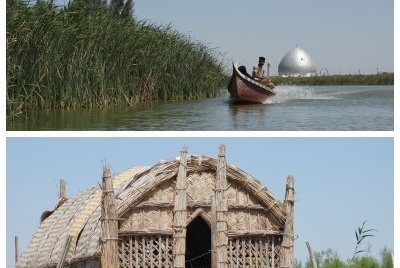
This should have been split into two WHS: one for the sites of the Ancient Sumerian civilization, one for the “New” Marshes. ICOMOS and IUCN suggested to do so and saw OUV in both, but inscription was rushed through and now we’re stuck with a messy inscription and an unrecognizable site name.
I will focus my review on the Marshes and not on the archaeological sites. These Marshes are the so-called “New Marshes”, which originated about 3,000 years ago when the original marshes near the Sumerian cities dried out and the coastline moved south-east. They have been recognized because of their bird life and the connection to the life of the Marsh Arabs, whose traditional lifestyle was immortalized in the book by Wilfred Thesiger. A visit was included in my tour, but I wondered beforehand whether we would end up at the core zone or an area especially designed for tourists.
Already in the city of Nassiraya the Marshes are signposted with the globally known brown road signs. We drove for 1 hour and 15 minutes to a place where they’ve built a reception area with boats for tourists and a few reed houses. It is near the shiny-silver Martyrs Monument in Chabaish, where at the entrance they even sport a full WHS plaque indicating the Central Marshes component. So core zone it definitely was! The Martyrs Monument commemorates the struggle of the Marsh Arabs against Saddam Hussein, who took a particular dislike to them as they …
Keep reading 0 comments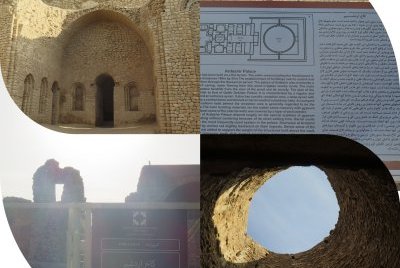
I visited in 2019 just after it had been inscribed although the signs still didn't have any UNESCO logos. It was in English though, and well written, all that matters. There are many locations by the way. I stayed at a small place in Atashkadeh and had the Ardashir Palace just next to me but on the day of arrival it was too late - I saw it in the dark but why I would bother to check out shades. In the morning it was a good time to visit. In retrospective I may have added more of the sites on my journey but I don't find these too interesting. It was free and unprotected but for the flimsy gate. It may have better protection now but it's also in the middle of nowhere so nobody really "threatens" these. I think no maintenance is more of a hazard.
The main view was the domed hall. It has not much decoration and your main attractions are windows and doorways. It looks dull, yes, so do more research to understand why you are actually visiting. This surely isn't Persepolis!
You can see this place in 30 minutes easily which is why I was staying next door and had a quick look. Maybe the other sites are better but I doubt it. I could also do more research on this but we already have an academic review by Solivagant so please read his for more insight. Add this on your trip …
Keep reading 0 comments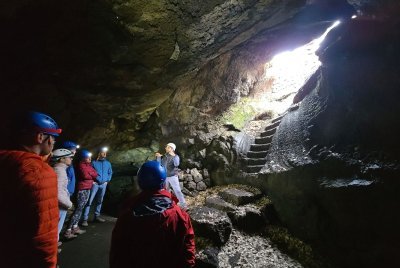
We based ourselves in Taormina for 4 days in early April 2025 to immerse ourselves in this location, as it is a beautiful coastal town (up in the hills) with an amazing amphitheatre and character itself (not UNESCO). We were blessed with a wonderful view of Mt Etna from Taormina for the first 2 days and then the cloud cover came in. We choose a local tour company for a Morning Tour of Mt Etna which was 75 Euro per adult. The tour company picked us up at 8.30am for a leisurely drive up the Northeastern slope of Mt Etna where we then hiked for about an hour and half along the slope of Mt Etna amongst the lava flows and landscape. Snow was still visible across the top of Mt Etna, although we only went up to 2000 feet. The wind was gusting between 30 - 50 kilometres per hour and whipping up some great sand (lava dust) storms as we navigated the walking trails and crests of some of the hills in the area. We then continued to Grotta della neve, where we walked through an old lava tube before having lunch nearby and returning to Taormina at 3.30pm in the afternoon. It was a great experience, with the Northeastern slope being less "mass" tourism as the Southern slope has the cable car and more tourist infrastructure. Ironically, we climbed on Monday and on the Friday. 4 days later, Mt Etna erupted providing a lovely show, which we …
Keep reading 0 comments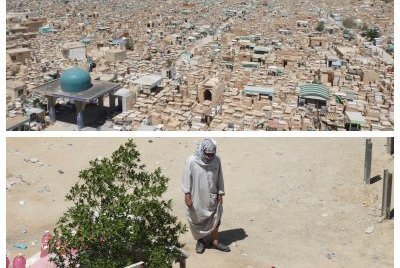
Najaf in Southern Iraq is the holiest city for Shia Islam as it holds the Tomb of Ali – “the” Ali, son-in-law of the Prophet Mohammed and with whom the Shia split from the lineage as recognized by the Sunni. He was assassinated in 661 in nearby Kufa and buried in Najaf (though some believe his remains are elsewhere, the Caliphs since the 8th century have recognized Najaf as the place and it developed into a huge pilgrimage site).
The Tomb of Ali is now housed in a glitzy mausoleum, rebuilt and embellished over and over again. The day before, I had been to the Tomb of his son Hussain in Karbala, but clearly this one in Najaf is the one where the most focus lies and where the money flows to. The exterior is covered with glazed tiles and the inner grounds have those huge umbrellas that you also see in Medina to provide the pilgrims with shade to sit and pray. Non-muslims are allowed to enter all the way; for the females, this means that they have to borrow an abaya at the entrance. The women’s queue to the tomb was quite pushy; people couldn’t wait to touch the grille around it or tie a ribbon to it.
About 500m away lies the Wadi Al-Salam Cemetery, which is said to hold the graves of 6 million Shi’ites wanting to be buried close to Ali. Spread across 6 square km, it is very densely packed. Roads are …
Keep reading 0 comments